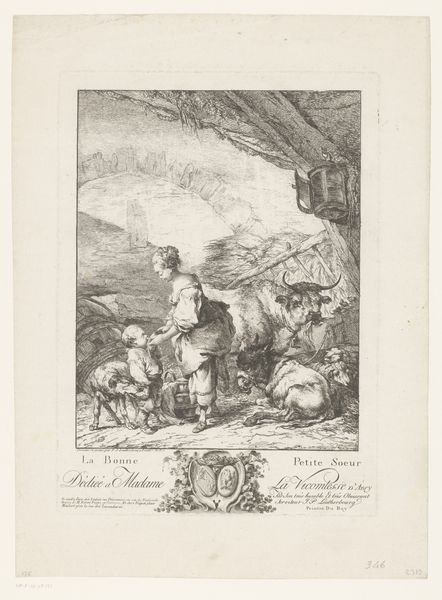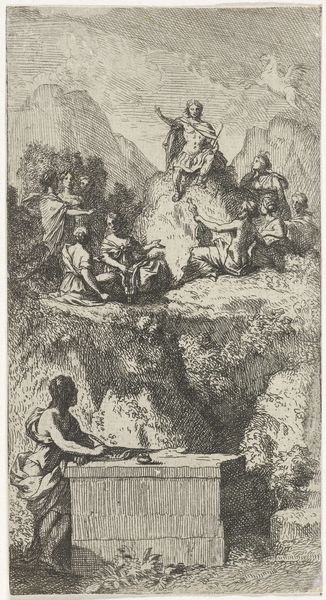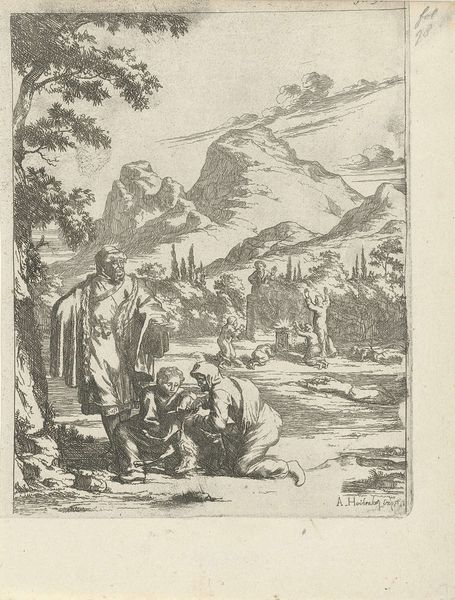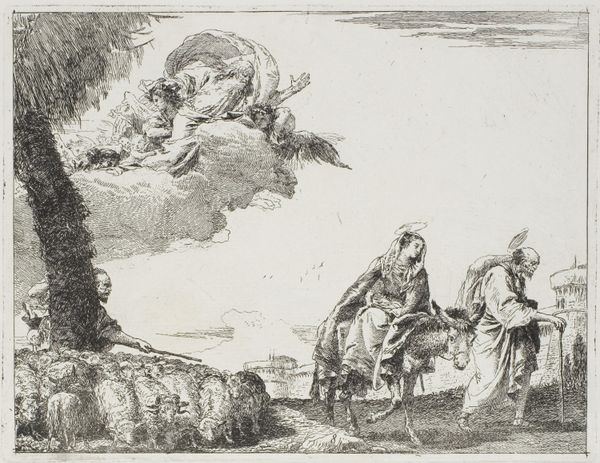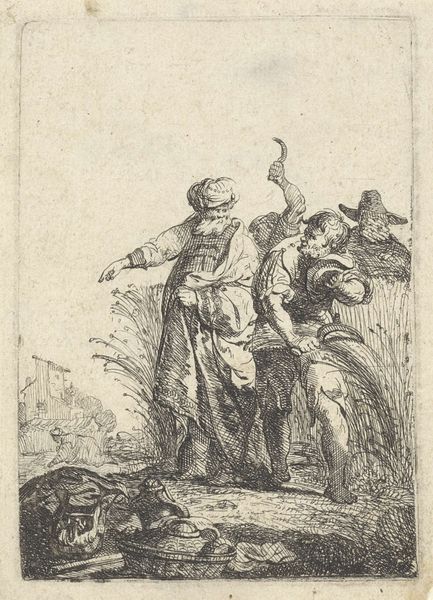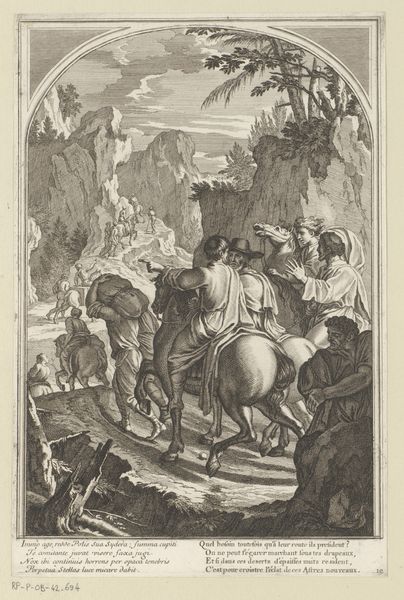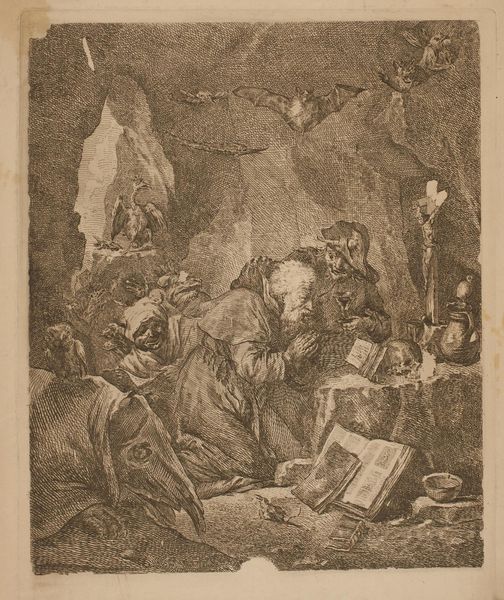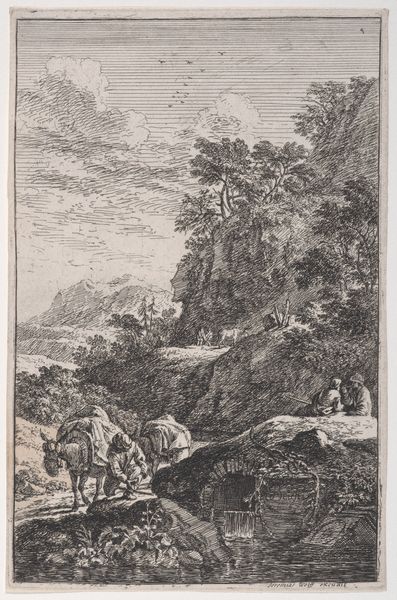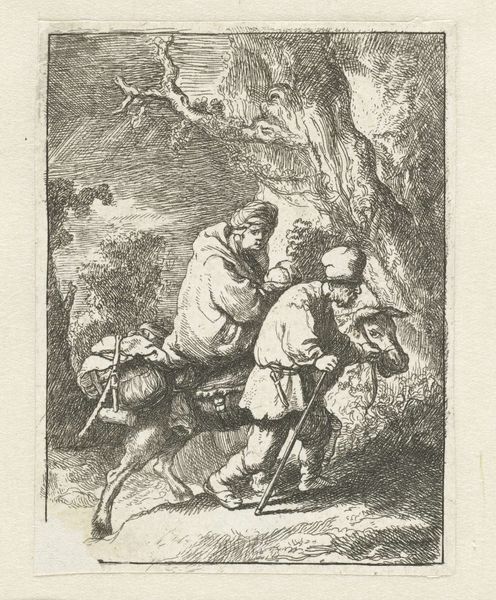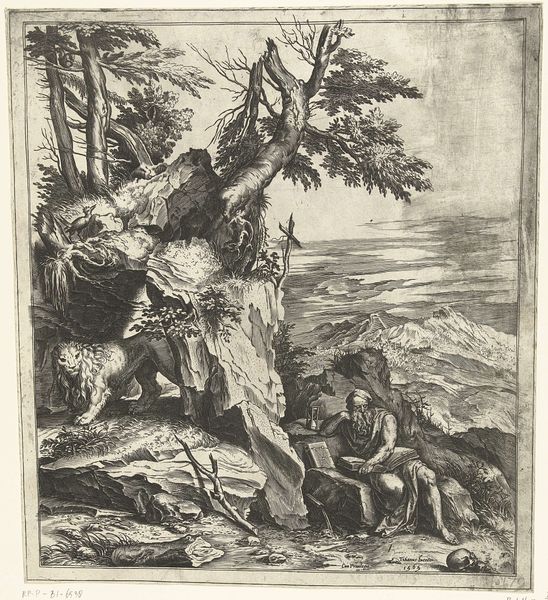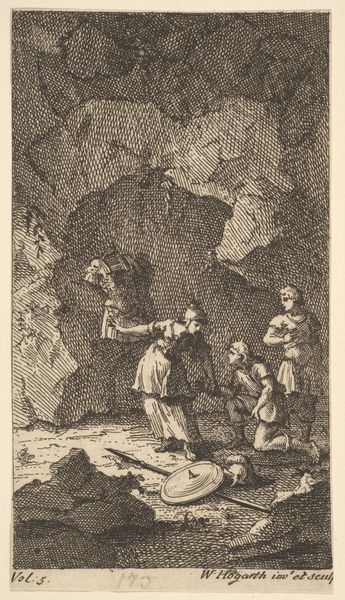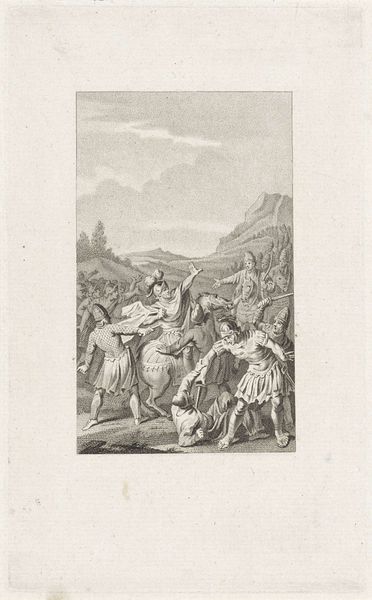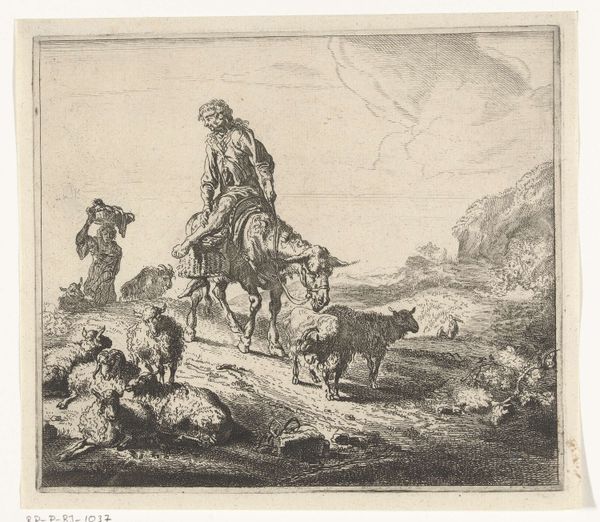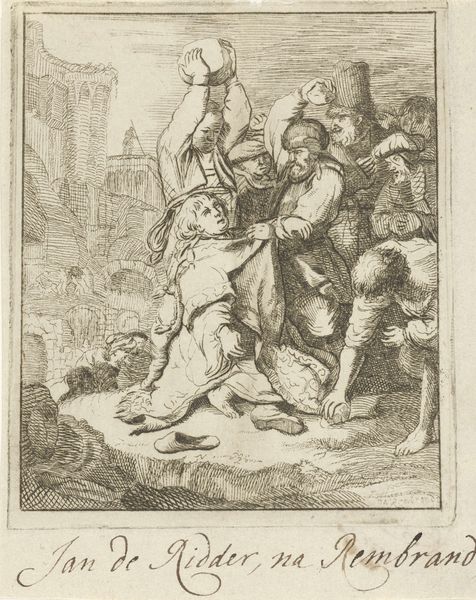
Dimensions: sheet: 12 13/16 x 9 3/16 in. (32.6 x 23.4 cm)
Copyright: Public Domain
Curator: Here we have "Le bonne petite soeur" by Philippe Jacques de Loutherbourg, an engraving dating roughly from 1765 to 1771. Editor: My immediate impression is how meticulously the artist has crafted a scene seemingly of both tenderness and rustic hardship. The tonality is striking given the limitations of the print medium, as the artist has captured subtle gradations. Curator: Precisely! Note the carefully placed hatch marks; they define the forms while creating distinct textures. Observe the architectural nature of these markings—essentially abstract but contributing immensely to our understanding of form. Look closely at how Loutherbourg has built volume by controlling line weight. Editor: The primary figures, a woman and a young child, are laden with significance. This idealized rural domesticity—what cultural memories do they trigger? She's "the good little sister" tending to the animals, the younger sibling… she embodies a specific concept of pastoral responsibility and maternal care, reflecting the era's complex relationship with nature and social order. Curator: True, there's that. But I see the distribution of the figures against the negative space. Look at the triangular arrangement—sister, child, donkey. Notice the balance. These formal choices dictate how our eyes move through the work, framing not only a scene of caring, but a self-contained, stable compositional unit. The engraving becomes less about a simple narrative and more about an essay on structural harmony. Editor: I wonder, though, how that stability is challenged? Note the precarious shelter, the animals so near... all indicators of vulnerability. This reflects perhaps a deeper societal concern with idealized images of virtuous peasantry. It reminds viewers about their place in the world; not to judge this level of poverty. Curator: Yes, this "fragility" lends the work dynamism; I agree, but even here, in his handling of detail in rendering the figures with line, Loutherbourg provides counter-stability to the image. In this context, all else becomes compositional relief and not some deeper meaning about rural virtue. Editor: Perhaps we are destined to disagree about primary motive. Either way, his depiction speaks volumes about its historical moment and offers more depth upon reflection. Curator: Indeed, whether prioritizing visual composition or cultural codes, the work remains compelling!
Comments
No comments
Be the first to comment and join the conversation on the ultimate creative platform.
